|
The Make up of Mars
WHAT MARS IS MADE OF
We might want to know what Martian soils are made of and how they behave when chemicals and biological materials come into contact with them. This is not only out of curiosity but also because one day mankind will want to set up a permanent base on the Planet. We will want to grow crops for food, consumable materials and to help the human environment.
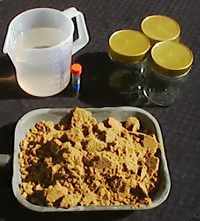 Task 1: Making it Task 1: Making it
You can create soils that are similar to those we think exist on Mars by taking some very dry sharp sand, and putting it into a baking tray or something similar. Add iron filings, or steel wool cut up into small pieces (be very careful - splinters can get into your fingers, so wear strong gloves). Put enough water in the tray to cover the sand, then leave it for a week. Check it every day, and top up with water when needed. When it goes rusty, rake out any steel wool with an old fork and dry the sand in an oven. Baking it for an hour at over 100 C (212 F) will sterilise the soil.
Task 2: Simulating the Environmental Chemistry
Take some of the soil you have made and see what happens to it when you subject it to different environmental conditions and chemistry, for instance:
Materials
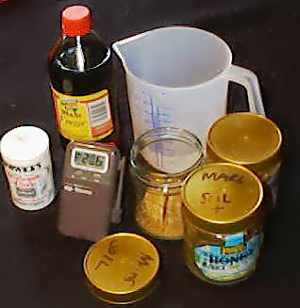 You will need: You will need:
Your soil
Assorted glass jars - clean them well and rinse them in water. They should be airtight.
Thermometer - optional
Water
Baking powder (soda)
Vinegar
Access to a freezer
A CO2 Chamber - make your own
Mix up your soil well, and divide it into a dozen or so samples, then put each in a separate pot or jar.
Method
Temperature and Atmosphere, Light and Dark
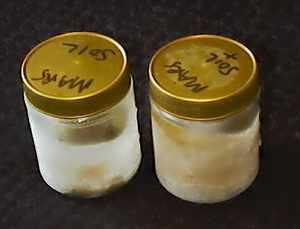 We want to see how the soils behave in both Earth and Mars conditions. Martian temperature condition can be simulated in a freezer, and we can create something close to the martian atmosphere quite easily. We want to see how the soils behave in both Earth and Mars conditions. Martian temperature condition can be simulated in a freezer, and we can create something close to the martian atmosphere quite easily.
First, prepare four samples by putting some soil into three air-tight jars. Put the lids on two samples. One should now be left in the light, the other should be put in the dark in the freezer. The remaining two samples are the martian ones and need a CO2 atmosphere.
It might be difficult to put the CO2 chamber in the freezer, so place the two Mars jars in the CO2chamber (with the lid off!) for a few hours, so they fill with CO2. You should stir the soil around to release any air in it. Next, put on the lids. The soil is now bathed in a martian-like atmosphere.
Finally, place one jar in the freezer, and put the other with the warm, light Earth sample.
You can check to see any visual changes in the soil samples from time to time. Do not remove the lids. Then after a period of weeks open the jars and examine the soil samples for any changes.
Keep a record of your daily observations, which should also show the freezer temperature and the room temperature.
Moisture and dryness, acid and alkali
To take your tests further, prepare samples that contain moisture, acid and alkali for both Earth and Mars conditions. Just repeat the experimental methods you used before, and record the results.
Make a CO2 Chamber
To make an atmosphere rich in carbon dioxide you can use the following method.
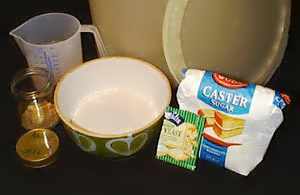 Take a plastic bucket, add up to a half litre or a pint of water, add about 20 grammes (an ounce) of sugar, and make a solution. Put the bucket in a warm place - more than 20 C (70 F) - and add a packet of yeast. If it doesn't have a lid, cover the bucket with a plate or a board, so that the air can escape at the edges, but the bucket isn't open. After an hour or two the yeast will be active, giving off carbon dioxide. Make a platform in the bucket to stand your samples on. You don't want them sitting in the yeast solution. An up-turned bowl or a brick would be ideal. Take a plastic bucket, add up to a half litre or a pint of water, add about 20 grammes (an ounce) of sugar, and make a solution. Put the bucket in a warm place - more than 20 C (70 F) - and add a packet of yeast. If it doesn't have a lid, cover the bucket with a plate or a board, so that the air can escape at the edges, but the bucket isn't open. After an hour or two the yeast will be active, giving off carbon dioxide. Make a platform in the bucket to stand your samples on. You don't want them sitting in the yeast solution. An up-turned bowl or a brick would be ideal.
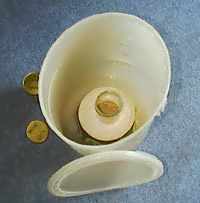 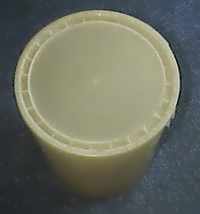
How your chamber works:
The yeast gives off CO2 as a by-product. CO2is heavier than air and will stay near the ground - or in the bucket in this case. However, gasses will still tend to mix, so putting a cover on the bucket is a good idea. The yeast will produce a slight pressure and the air will be forced out of the bucket, so don't seal it completely, or it will inflate and split!
You can keep your CO2 chamber operating by adding sugar to the yeast. Eventually, however, you will need to replace the growing medium. Just empty the liquid away and start again.
While this method doesn't give the purest CO2 atmosphere, it is cheap, easy to do and safe.
While it is not harmful we suggest that you DO NOT BREATHE IN THE CARBON DIOXIDE.
|













